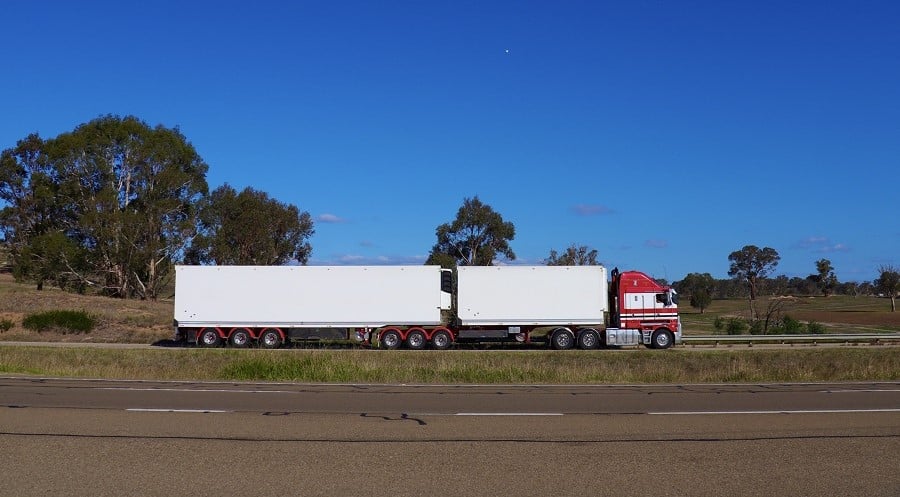What’s a B-double truck?

We hear a lot about B-double trucks but what is a B-double and how does it differ from a road train?
It boils down to how the trailers behind the prime mover connect to each other.
B-double trailers use a connection known as a fifth-wheel coupling – or turntable – which sits atop the extended axle group of the lead trailer.
The front of the second trailer, which has no front wheels, sits on top of the fifth-wheel/turntable and is secured by a kingpin locked into the coupling.

(The term fifth-wheel hails from the horse and carriage days, when a horizontal wheel-shaped pivot point was attached to the front axle assembly of the carriage allowing it to be steered. Most carriages had four wheels and this device was dubbed the fifth wheel.)
A B-double has two trailers and can be up to 26m long including the length of the prime mover.
If there’s a B-double, surely there’s an A-double – and yes, there is. The second trailer on an A-double is connected to the lead trailer by a drawbar – similar to a caravan.
The drawbar is attached to a separate axle group known as a converter dolly, which is fitted with a fifth wheel/turntable. The front of the second trailer sits on the dolly.

The front of the drawbar fits into a coupling at the rear of the lead trailer, like a caravan connects to a tow ball – though truck couplings are much chunkier.
An A-double can be up to 36.5m long.
Road Train
A road train is a prime mover towing at least two trailers. However, although a B-double has two trailers it isn’t a road train. An A-double on the other hand is defined as a road train.
To further muddy the waters, a B-triple (three trailers), which uses only fifth-wheel couplings rather than drawbars, is classed as a road train because it can be as long as an A-double.
In the transport industry this distinction is important because specific rules apply to each classification of heavy vehicle.

There are also several other combinations, including A-triple, AB-triple, AAB-quad (four trailers), ABB-quad, BAB-quad, and so on, all based on the type of connection used between each trailer.
Other combination sub-variations are based on the number of axles on the trailers.
If you’re still reading, most lead trailers in all combinations are connected to the prime mover by a fifth-wheel coupling.
While people often use the term semi-trailer to refer to the whole shebang – prime mover and trailer – a semi-trailer is actually just a trailer without front wheels that fits onto the fifth wheel on a converter dolly, prime mover or B-type trailer.
Restrictions
Truck and trailer combinations longer than 22m but not longer than 30m must display a ‘long vehicle’ warning sign on the last trailer.
Combinations longer than 30m must display a ‘road train’ sign at the front of the prime mover and the rear of the last trailer.
The maximum gazetted length of road trains in Australia is 53.5m and can be comprised of up to four standard trailers. Exemptions can be granted for vehicles that don’t meet gazetted requirements.

B-doubles are restricted to routes that have been approved by the relevant road authorities. The National Heavy Vehicle Regulator (NHVR) map shows the movement restrictions that apply to each class of heavy vehicle.

